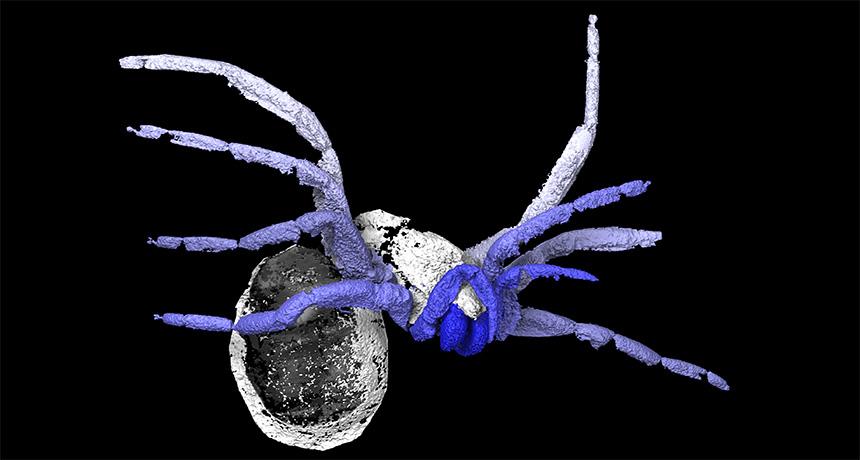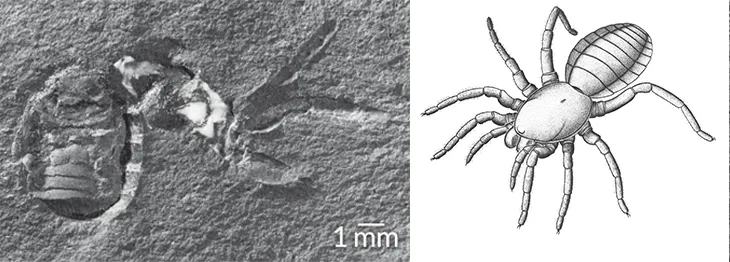Ancient arachnid was almost a spider
Fossil is missing organs needed to spin silk

SPIDERLIKE The ancient arachnid Idmonarachne brasieri was a close cousin of spiders. Researchers used CT scans to create a 3-D visualization of the 305-million-year-old fossil.
R.J. Garwood et al/Proceedings of the Royal Society B 2016, Museum National d’Histoire Naturelle, Paris






